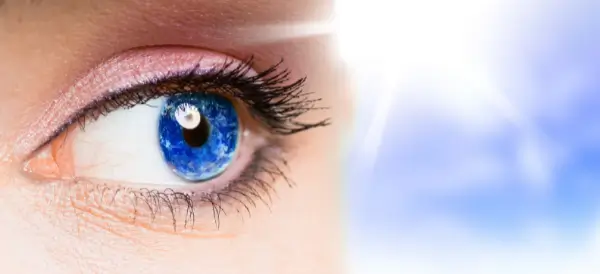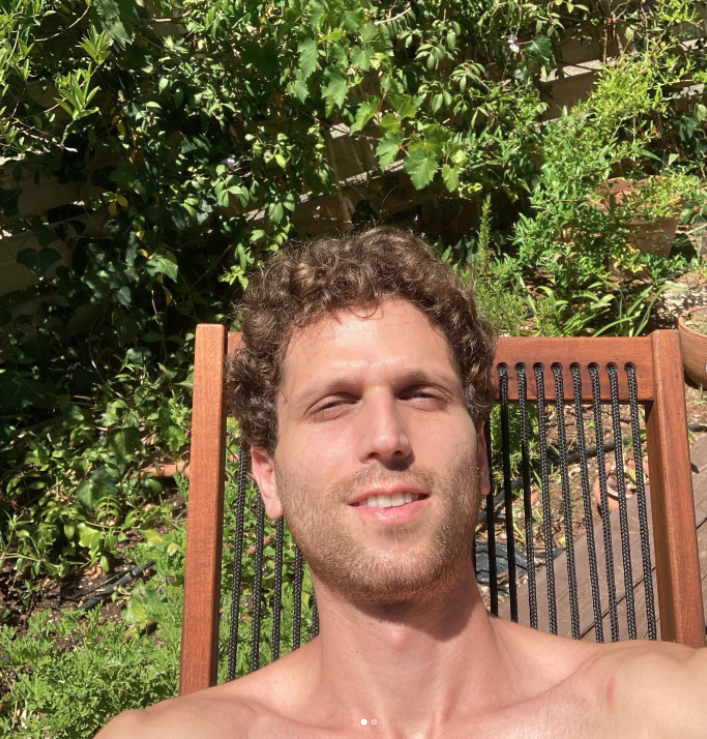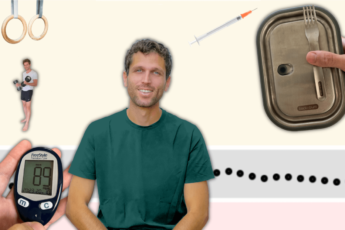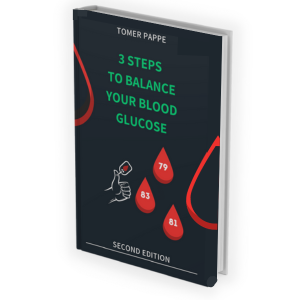
Sun is the source of all life
The popular opinion today is that exposure to the sun is a harmful thing and many believe that it is our enemy. Of course, it is important to stay “wise in the sun” and not get burned, but the problem is that in the world we live in, people don’t spend enough time in the sun. If you tell people today that the sun is the main force for life, that we would not survive without its light and energy and may also be the cure for most diseases, they probably won’t believe you, most of us are convinced that the sun is dangerous for us. This is despite the fact that until about 100 years ago the human race followed the sun intuitively just like all wild animals. In this article I have collected data from various studies and sources in order to understand the relationship between sun exposure, normal levels of vitamin D and health benefits obtained from proper sun exposure.
Table of contents:
The benefits of the sun
The sun is a source of benefits that you should know how to take advantage of.
Source of Vitamin D
Vitamin D is a vital substance, also known as the “sunshine vitamin”. In fact, sunlight is the primary source of vitamin D production for the body, although it is possible to obtain very small amounts of natural vitamin D in food. Curiously, it doesn’t work like a vitamin at all, but rather like a hormone that performs many functions in the body. Therefore, the role of the sun is essential for the synthesis of vitamin D because our body is not capable to produce this vitamin by itself, which is essential for its functioning.
Moreover, the synthesis of vitamin D is responsible for the absorption of calcium in our body which essential for the development of the skeleton and the maintenance of a strong and healthy bones.
Immune system booster
According to a study published in Nature Immunology, a daily source of sunlight would strengthen our immune system against pathogens and skin damage. Interestingly, the solar radiation stimulates the production of white blood cells responsible for protecting our body against infections and harmful substances.
Good mood activator
Sunlight has this ability to stimulate our “feeling-good hormones”. When it’s sunny, we feel healthier, even happier. Researchers also agree that light has a positive influence on our brain. Namely that serotonin is the substance that produces the feeling of well-being and happiness. Thanks to the sun, its production is accelerating. It has been shown that in countries where bad weather and cloudy days prevail, citizens tend to get depressed.
At what time should one go out in the sun and for how long? How much sunlight do you really need and for how long to get enough vitamin D?
When do we get the suitable amount of UVB (responsible for sunburn) to get the best absorption of vitamin D? I try to spend time in the sun during the hours before and after the daily UV peak. To identify patterns in UV data and when sun protection is needed, you can google “UV index” and add your location.
The best UVB rate will be at 8-11a.m. in the morning and 15-18 p.m. in the evening as demonstrated in the daily UV index shown in the picture. Therefore, according to the graph shown. the ideal time that is recommend getting sunlight is between 8 to 11 a.m. and 15-18p.m. in the afternoon.
That is about 6 hours a day in total, with as many exposed body parts as possible. For optimal exposure it would be best to be exposed unclothed. The important receptors needed for the absorption of the sun rays are found on all the organs of the body, especially on the reproductive organs. The main key is – to get exposed to sunlight without getting burned!
The harmful use of sunscreens
In reality, many of us prefer to use sunscreens in order to “protect us from getting burned” instead of exposing their skin to the sun in the right and safest time of the day with no need of sunscreens. The problem is that many sunscreens damage our body’s ability to transmit the correct signal that is: now it is time to return in the shade. When we use sunscreen, we tend to stay longer than it should in the sun, and unfortunately after a long period of time of excessive use of sunscreen, skin cancers of all kinds may appear. That is why, people who use sunscreen have more exposure to sun and therefore a higher chance of getting skin cancer.
Moreover, there is a correlation between the time where sun protective products came into excessive use to the time we began to see an increase in the number of people diagnosed with melanoma cancer. Paradoxically, the sun protects us from melanoma and I will explain exactly why later on in this article.

Recently, the formulas in some sunscreens have evolved, we often find nanoparticles (titanium dioxide – E171 – and zinc oxide) whose effects on the human body are not yet known precisely. On the other hand, we know that they are able to cross the skin barrier, enter the bloodstream and then penetrate the brain and the organs such as the liver, the heart, and the lungs.
It should also be remembered that these creams are “effective” only about 20 minutes after application.
In addition, sunscreens should not be used from one year to the next because not only do they lose effectiveness, but above all they can become potentially carcinogenic. This is due to octocrylene, a sun protection filter present in many of them. Indeed, over time, octocrylene is transformed into benzophenone, a substance classified as “possibly carcinogenic to humans (Group 2B)” and which can be absorbed up to 70% through the skin.
Melanin, infrared light and skin cancer
Melanin has the potential to convert 99.9% of absorbed sunlight into heat, which apparently may reduce the risk of skin cancer. Melanin also has the potential to improve the amount of infrared light absorbed from the sun and this is exactly what we want to achieve.
A fascinating study in 2017 tested the theory that it is possible to protect mice from skin cancer by using a new treatment for melanoma, with the usage of a special sticker that is applied to the skin, an infrared light and melanin; Melanoma tumor cells produce high amounts of melanin. The researchers created a substance from melanoma cells, which they applied to the skin of the mice (as a source of melanin). Among the mice with the stickers, only 13% survived. The mice that survived were the ones that received a combination of infrared light and with the sticker and they lived for about two months; 87% of these mice did not develop tumors.
Sunlight, vitamin D supplements and cancer
Back in 1980, epidemiological studies showed an inverse geographical relationship between the amount of solar radiation and the death rates from colon cancer. In the fifty years that have passed since then, many studies have shown that a high level of vitamin D in the blood and in the cell is associated with a decreased risk of getting all types of cancer. A large-scale study from 2016 revealed that those with higher levels of vitamin D in the cell have a higher chance of living without cancer of the following types: brain, cervix, endometrium, esophagus, ovaries, thyroid gland, head and neck cancer, gastric adenocarcinoma, hepatocellular carcinoma, and lymphoma.
For all cancers, those with higher levels of vitamin D at the time of the diagnosis have a significant improvement in their recovery journey.
Vitamin D supplementation
Given all of these evidence on the relationship between cellular vitamin D levels and cancer protection, we would expect vitamin D supplements to be the first recommendation for cancer protection measures. The problem is that vitamin D supplements are far from what we think they are. The production process of these pills is not always a clean process and they are produced while synthesizing different plant materials. The product of this artificial production process is an unnatural supplement that is difficult for the body to utilize properly if at all. Taking a supplement will lead to an increase in vitamin D levels in the blood, but it will not always lead to an increase in vitamin D levels inside the cell. Even if it increases slightly, it should be remembered that the quality is inferior when it comes from a supplement, compared to the ultimate source of vitamin D that humans have enjoyed for thousands of years – the sun. Several studies that investigated the relationship between taking a vitamin D supplement and reducing the risk of heart disease did not find a direct relationship between the two. Low vitamin D is also closely related to the appearance of autoimmune diseases and those who already suffer from an autoimmune phenomenon or a combination of several autoimmune phenomena will often show lower than normal levels of vitamin D in the blood.

Sunlight and cardiovascular diseases
Scientists have known about the fact that there is an epidemiological link between cardiovascular diseases and our geographic location on Earth for a while. People who live at higher latitudes have significantly higher rates of heart diseases than those who live in areas closer to the Earth’s equator. Regardless of geographic location, it is interesting to notice that more people suffer from heart attacks in the winter than in the summer.
The sunlight and the eyes
Aggressive marketing of sunglasses and the apparent benefits of wearing sunglasses have made us accustomed to wearing sunglasses every time we go outside, supposedly to protect our eyes from “harmful UV rays”. We were never told that melanin – which gives the eyes their blue, green or brown color – protects them from UV rays. In fact, the human eye has evolved to naturally deal with sun exposure through antioxidant protection produced by the melanin, as well as other antioxidant defense systems based on glutathione and other enzymes found in the eye. I personally believe, after reading those studies and in light of the life work of Dr. Weston A. Price, that getting adequate exposure to sunlight for the eyes is in fact imperative. Not only for the health of the eyes but also for the receptors in the brain stem that utilize the light penetrating through the eyes.

The sun and sleep disorders
The effects of light on sleep are important for our well-being.
The pineal gland sits behind the eyes and, among other things, receives light entering through the retina of the eyes. The main function of the pineal gland is to maintain the circadian rhythm (the physical, mental and behavioral changes that follow a 24-hour cycle, it responds to light and dark in other words, the sleep-wake cycle).
Thus, it contributes to a calm and deep sleep, by synthesizing large amounts of melatonin when the sun sets in the evening. In addition, melatonin provides sulfate to brain neurons during the night, which supports the process of breaking down and recycling ‘cell waste’ during sleep.
As mentioned, another effect of sun exposure is the simultaneity of the body with the hours of the day, the so-called circadian rhythm. Every tissue and organ are synchronized by the biological clock. This way the body synchronizes all body systems and especially the hormonal system according to the biological rhythm. All organs work optimally when they are synchronized with the circadian rhythm, especially organs and glands of the endocrine system such as: the pancreas, the thyroid gland (most importantly hypothyroidism condition), the adrenal glands and other organs and glands of the endocrine system that are regulated by the brain. The functioning of the brain depends directly on the synchronization of the body with the hours of the day. This synchronization is optimally achieved by the exposure to the sun in the first hours after sunrise and in the hours before sunset. This is how the body responds to what is the correct physiological rhythm for it, in other words, when to wake up and when to go back to sleep. Another important factor is avoiding electronical devices in the hours leading up to bedtime in order to not cause any confusing to the physiological system. Screen devices are able to disrupt the melatonin surge needed to fall asleep and could cause the body to behave as if we are in “waking hours” even though it is late night.
Vitamin D and nutrition
Besides exposure to sunlight, certain foods naturally provide vitamin D and cholesterol and have been important to people living in northern latitudes since almost the beginning of evolution. Eating internal organs of fish and sea animals (an excellent source of both vitamin D and cholesterol sulfate) helped the Eskimos survival throughout history. If you eat a lot of industrialized seed oils, it will probably be harder for you to absorb enough sunlight without getting burned. If you avoid seed oils and provide your body with enough minerals such as astaxanthin, vitamin A, vitamin D, and COQ10 found in sources such as raw milk and butter from grass-fed cows, organic lard, fatty fish caught in the wild such as salmon (also called “wild salmon”) and it’s hard to find in Israel – you can probably stay in the sun long enough to absorb the good rays without getting burned. It is important to note that foods that are artificially added with vitamin D will not do the job, mainly because they usually do not contain sulfated cholesterol. You should make sure to eat organic foods to minimize exposure to glyphosate and toxic chemicals that disrupt the body’s ability to utilize sunlight optimally. I also make sure to eat carbohydrates in low amounts, which in my opinion is a necessary factor to prevent the skin cells from clogging, which can also significantly damage the absorption of the sun over time, and this will be easy for you to recognize through the changes in the rate at which your skin burns and the rate at which the skin peels and heals itself if you get burned.
Either way, the goal is to never get to the point of burning the skin when the law is “expose without getting burned”.
Not just vitamin D
When I inform people about how much important the sun is to our physical functioning, they often, reply with “Yes, I am aware of the health benefits of vitamin D.” So, I want to clarify that it is not just about vitamin D. It is much more important than that. Most researchers are frustrated because they associate high intracellular vitamin D with many health benefits, but when they experiment placebo-controlled studies on vitamin D supplements, they obtain consistently poor results. It’s about everything we get from the sun that is so necessary for a healthy, fruitful and long life – not just vitamin D.
Sunlight has been an important source of energy for Earth since the dawn of evolution. Plants learned how to use the energy of the sunlight to create organic compounds, and animals utilized sunlight as a source of energy for movement and cognition.
The varied roles of the sun in our body are essential for maintaining healthy blood vessels, supplying energy to the body and maintaining an efficient supply system for biologically active molecules – such as cholesterol, vitamin D, dopamine and melatonin. Sunlight also provides natural protection from the harsh summer sun through the production of melanin in the skin. Vitamin D supplements, on the other hand, may send a false signal to the skin tissues which in the long run may cause damage.
Conclusion
Why many among us hide from the sun rays if our skin has a natural defense system and the sun is beneficial for it? On the exception that you do not expose yourself for too long to its UV rays or during the wrong time, the Sun provides benefits that you should know how to take advantage of. As I always say, stay wise with the sun in order to extract all the good benefits. If we repeat that overexposure to the sun can be dangerous, we must not fall into the opposite excess: we also need the sun. On the other side, “protecting” yourself with suncreams should not encourage people to be less responsible in their sun exposure: more sun cream should not mean excessive sun which could lead to an explosion in the occurrence of cancer diagnosis. I believe total protection against the sun does not exist. What exist and what is important is to know how and to understand when to get exposed to sun. The benefits of the sun are essential for life, especially on our mood, production of vitamin D, or even for the treatment of many diseases mentioned in the article. Sun exposure is also important for the eyes and the glands found in the brain stem behind the eyes that control circadian rhythm and movement. Finally, the effects of light on sleep are important for our well-being. Sun exposure promotes good sleep the following night. This can help you fall asleep more easily at night. That is because the body relies on variations in the intensity and composition of sunlight to synchronize the wake/sleep cycle in the course of a typical day. And again, don’t forget the principle: “get exposed to the sun without getting burned.”

*The information on this website is not intended to be a substitute for professional medical advice, diagnosis or treatment. The said information is intended for informational purposes only and stems from personal experience. The text is not intended to diagnose, treat or cure any specific disease or medical condition. Reviews and testimonials about nutrition, training and various health approaches represent individual experiences and what is stated on the site does not guarantee any results for your specific situation. Any choice of a specific way of eating or medical treatment according to a given situation should be made under the guidance of professionals qualified to do so.




